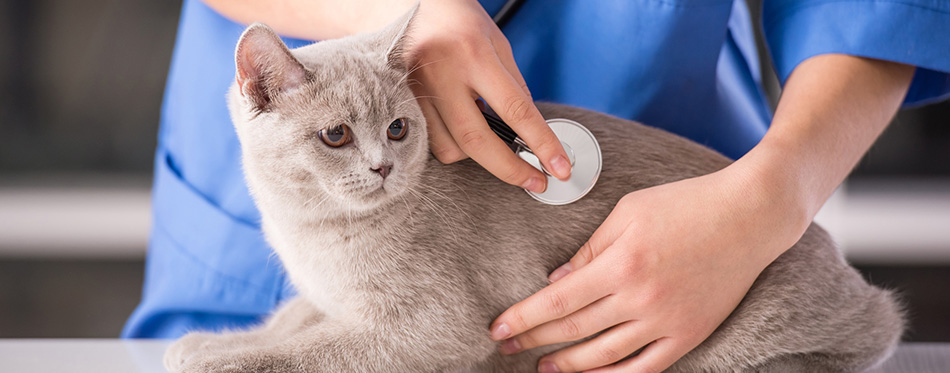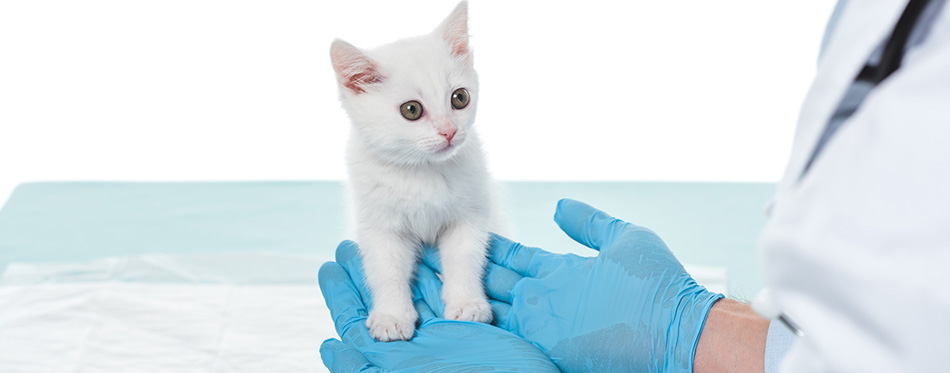Feline ear infections are quite common. These are conditions that can cause inflammation in the various structures of the feline ear. Since cats rely on their ears for the sense of hearing, thermoregulation, and self-expression, an infection can have a negative effect on these functions. While feline ear infections are treatable with the correct antibiotics, preventing infections is a more cost-effective approach to such health problems. To do that, one has to recognize the possible causes of ear infections in cats.
Infection or Inflammation?
Before we start talking about otitis, it is important to have a clear understanding of what an “infection” is. The reason for this is that people always associate the suffix “-itis” to infection. That is why, when people talk about “otitis”, they will almost always refer to an infection of the ears.
Unfortunately, the suffix “-itis” does not denote infection. What it suggests is “inflammation”. As such, when you say “otitis”, you are referring to ear inflammation. This is the same as “gastritis” (inflammation of the stomach) or “sinusitis” (inflammation of the sinuses).
There are many possible causes of inflammation, but there can only be one cause of infection – microorganisms. To be more precise, these are infectious microorganisms capable of triggering a response from the cat’s immune system. One of the effects of triggering the immune system is inflammation.
In short, one can get an inflammation but never have an infection. However, whenever there is an infection, inflammation is always present.

A Primer on Feline Otitis
Feline otitis describes a condition whereby there is inflammation in the ear or ears of the cat. This can be due to the presence of an infectious organism or other causes.
If the inflammation occurs in the outer ear, we call it otitis externa. If the structures of the middle ear are the ones affected, then it’s called otitis media. If the inflammation involves only the structures of the inner ear, it’s referred to as otitis interna.
The location of the inflammation is important in the determination of the appropriate treatment. Otitis externa is a lot easier to manage than either otitis media or otitis interna. Inflammation of the inner ear structures can lead to deafness since this is the part of the feline ear that converts vibration signals into electrical signals. These electrical signals get delivered to the brain for interpretation. Hence, if there is inflammation in the inner ear, then it is possible that acoustic signals will not reach the cat’s brain.
Otitis can occur in only one ear. It can also develop in both ears. The condition can last anywhere from several days (acute) to several months (chronic). Kittens and juvenile cats seem to have an increased predisposition for ear inflammation. There are also certain feline breeds that are more susceptible to otitis.
What Can Cause Ear Infections in Cats?
As discussed, there is only one cause of ear infections in cats and that is infectious microorganisms. Among cats, the most common culprits are yeasts and bacteria.
- Malassezia
One of the most common species of Malassezia that can infect the feline ear is Malassezia pachydermatis. This is a fungus that resides on both the skin and ears of cats. They are normal “residents” of the feline skin. However, in cases of abnormal overgrowth, this yeast can produce inflammation. The resulting inflammation causes dryness and scaling of the skin of the ears. In some cases, there can also be foul-smelling discharge. In chronic Malassezia otitis, patches of the skin in the ears can become thicker and darker.
There are other species of Malassezia that can produce ear infections in cats. These include M. sympodialis, M. obtusa, and M. furfur; although, they are not very common.
- Staphylococci
Bacterial causes of ear infections in cats are not that common but they occur. The most common type of bacteria that can cause feline ear infections is Staphylococcus. Like Malassezia fungi, these bacteria live on the skin of cats where they do not cause infections. Unfortunately, whenever there is a break in the skin, the microorganisms can enter and then cause an infection.
The main issue with Staphylococcal ear infections is that they can produce pus-filled lesions. These can be a natural magnet for other bacteria to invade the tissues. If this happens, then the cat will not only have to contend with Staphylococcal species but also other types of bacteria.
There are other infectious agents that can cause infections in the ears of cats. However, these two are the most common.

What Can Predispose Cats to Ear Infections?
It is clear that the microorganisms that cause infection in feline ears are part of the normal fauna of the skin. What this means is that they are ever-present on the cat’s skin. However, something triggers them to become pathogenic. These are the risk factors that can predispose a cat to feline ear infections.
- Ear Mites
These ectoparasites are one of the most common causes of ear inflammation (not infection!) in cats. Otodectes cynotis is the species of mite that can cause ear irritation and inflammation. It does not burrow into the skin. However, the immune system cells on the surface of the cat’s skin recognize the presence of the ear mite as something foreign. Hence, it mounts an inflammatory reaction. This leads to intense itching, which the cat can scratch. Scratching can remove the superficial layers of the skin and allow the entry of bacteria or fungi. This can cause an infection. If the inflammation continues, there can be the formation of crusted or open lesions. It is through these openings in the skin that bacteria and yeast can enter and cause infection.
- Allergies
Food or seasonal allergies occur because of the cat’s hypersensitivity to certain compounds in the offending particle. With the activation of the immune system comes the release of pro-inflammatory substances that can make the skin very itchy. As the cat attempts to scratch the skin to soothe the itching, it can create small cuts or wounds. Again, these serve as opening for bacteria or yeast to enter.
- Trauma or Injuries
Open wounds create an entry point for infectious microorganisms to wreak havoc. A small opening in the skin is all that’s needed for bacteria to enter. Once they are in the skin, they can initiate an inflammatory reaction that can include redness and the formation of pus.
- Excessive Wax Buildup
The excessive production of cerumen or earwax does not cause feline ear infections. However, it can provide an accommodating environment for bacteria and yeast to grow. Earwax contains organic debris that can serve as food for microorganisms living in the cat’s ears. If the cat is ill, its immune system will not be able to keep these microorganisms in check. They will proliferate and cause an infection.
- Immunodeficiency States
Cats that have immunocompromised states are also prone to fungal ear infections. As mentioned, Malassezia species live in the ears of cats. They do not cause an infection because the cat’s immune system is able to control the excessive growth of these microorganisms. Unfortunately, if the feline immune system is not functioning well, then the fungal species can grow and multiply in an excessive manner. In other words, the rate of fungal multiplication is greater than what the cat’s immune system can handle. This can lead to fungal ear infection in cats.
- Foreign Objects
The introduction of foreign objects in the ear canal can lead to minor scrapes or abrasions. For example, grass awns and foxtails can scrape the skin of the ear canal and allow bacteria to enter. Dirt, sand, and other materials that can enter the ears have the potential to create small openings for germs to enter.
It is important to realize that these predisposing factors can also be the causes of ear inflammation.
Manifestations of Ear Infections in Cats
The manifestations of feline otic infections are always related to inflammatory changes in the ear. As such, you can expect the following.
- Increased clawing or scratching of the ears
- Intense shaking of the cat’s head or rubbing it against a furniture or the floor
- Ear discharge that can have a foul odor
- Patchy hair loss on the outer ear secondary to biting or chewing to relieve itchiness
- Redness of the earflap and the ear canal
- Swollen earflap
- Very thick earflap, in cases of chronic otitis
Diagnosing Feline Ear Infections
Veterinarians will employ a variety of laboratory and diagnostic procedures to help identify the presence of an infection in the cat. Microscopy can help identify whether the infecting microorganism is bacteria or fungi. This will help define the appropriate treatment.
In addition to microscopy, the vet may also order culture and sensitivity tests. These will help identify the most effective antimicrobial agent that can be used against the infectious organism.
Treatment of Feline Otic Infections
The management of feline otic infections involves a twofold approach. First involves the eradication of the microorganism that is causing the infection. If it is bacteria, then the cat is given an appropriate antibiotic. If the infection occurs in the middle ear or the inner ear, systemic antibiotics are a must. If it is only otitis externa, then a topical antibiotic will do.
During the course of the antibiotic therapy, it is important to adhere to the dosage guidelines of the veterinarian. In most cases, the antibiotic therapy can run from 10 to 14 days. It is a must to complete the therapy even if the cat is already showing signs of improvement.
As for fungal infections, the therapy often lasts several weeks to several months. Fungal species are very hardy. They also require more powerful antibiotics. Because the treatment is long-term, there is a chance that one might miss a dose. It would be wise to keep a calendar to monitor the administration of the antifungal medication.
The second focus of treatment is the management of the symptoms. If there is pain, an analgesic can help. Swelling and other signs of inflammation are best managed using anti-inflammatory drugs. It is also important to cleanse the ear canal. This will help remove any debris that can further fuel the growth of microorganisms.
Preventing Ear Infections in Cats
Managing feline ear infections can be a very costly affair. The antibiotics, anti-inflammatories, and other medications used in the treatment of the infection can run in the hundreds of dollars. This is not including veterinary expenses as well as laboratory tests. That is why it is best to observe a few preventive measures to help save you from all of these hassles.

Regular Ear Cleaning
Regular cleaning of the cat’s ears remains one of the most effective preventive measures against ear infections. By keeping the ear canal clean, you rob the germs of invaluable energy source. This way, they will never be able to grow and proliferate. However, it is crucial to know how to clean your cat’s ears the correct way. Never use Q-tips when cleaning as this can damage the skin of the ear canal. A better way will be to use pet ear cleaners. These come with formulations that are specific for cats. Clean the cat’s ears at least once a week. Find out more about cat ear cleaners here.
Pest Control
Ear mites are some of the most common risk factors of feline ear infections. One has to understand that ear mites are very easy to pass between cats. One way to control this is by limiting your cat indoors. Outdoor cats have a higher risk of getting ear mites. If you cannot avoid letting your pet outdoors, then you have to apply flea preventatives that can also work against mites. You have the option of using a cat flea collar or a spot-on topical treatment. These will kill any mite that may already be on your cat while also keeping others away. If you have to bring home a new cat, make sure that it is free of mites first. For more options, check out our detailed review of the best flea treatment for cats.
Cat ear infections are always due to infectious microorganisms like yeast and bacteria. However, there are factors that can put a cat at a greater risk of such infections. Knowing what these factors are can help you take more concrete preventive measures.
Sources:
- Ear Problems in Cats – international cat care
- Examining and Medicating the Ears of Your Cat – Washington State University
- Feline Ear Disorders – Cornell Feline Health Center

